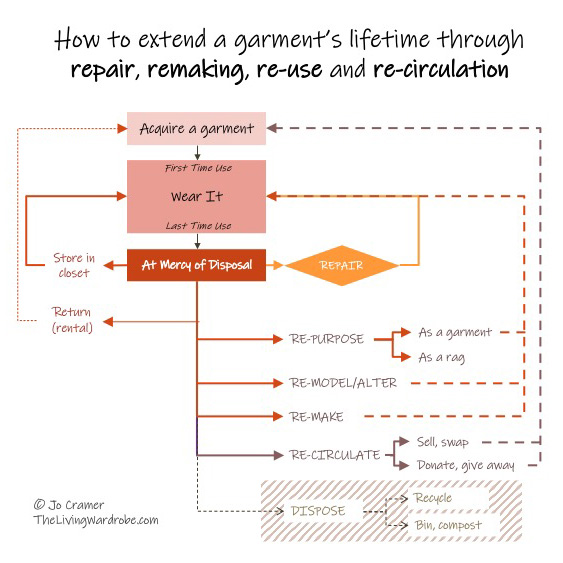
Repair is the simplest strategy to keep garments in use and out of landfill. Repair fits into a larger ecology of garment lifetime extension strategies that encompasses complementary methods of remodelling, remaking, repurposing and recirculating garments. These are the actions consumers can take to live sustainable fashion. Often, engagement with sustainable fashion is only associated with the point of purchase- to buy a sustainably produced garment. When in fact, sustainable fashion extends beyond the point of acquisition into habits of wear, care and disposal. Embracing sustainable fashion doesn’t have to be expensive or warrant a wardrobe makeover, it is as simple as following the care label instructions to look after your clothes, finding a new home for those garments you aren’t wearing and of course, repairing the impact daily life inflicts on garments. Repair is a skill and an attitude. It transforms objects and empowers us. And it’s not that hard.
This diagram was developed within my PhD thesis, following a review of literature in which the various strategies for keeping garments out of landfill was discussed. At the time, there were few diagrams and little consistency in the language used to describe divestment options for unwanted garments. Creating this diagram was my way of mapping what I was reading to work out where the synergies and gaps are. The ‘a-ha!’ moment was simply realising that you don’t buy sustainable fashion you live it!
Most recently, this diagram was shared on the Instagram account @repairingfashion, where a colleague and I publish the outcomes of our repair activities. Follow along for more insights into the role of repair within fashion design and to hear about events we run in Melbourne (when we’re allowed out of lockdown!).
